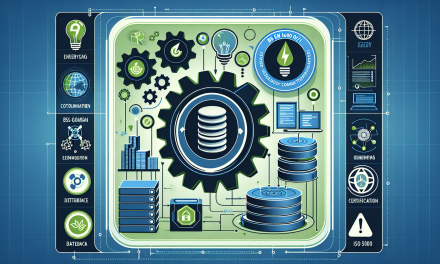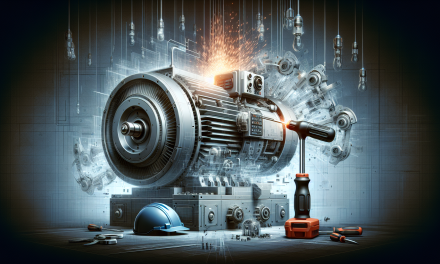Table of Contents
- Introduction
- Understanding Maintenance Errors
- Identifying Maintenance Errors
- Managing Maintenance Errors
- Best Practices in Maintenance Management
- Technology Advancements in Maintenance
- FAQs
- Conclusion
Introduction
Maintenance management plays a pivotal role in the smooth operation of any facility or plant. While every organization aims to achieve efficiency, human error often creeps in, resulting in increased downtime and costs. Therefore, understanding, identifying, and managing these errors is key to maintaining operational excellence. In this blog post, we delve deeply into the nuances of maintenance errors, empowering you to take actionable steps towards improvement.
Understanding Maintenance Errors
At its core, maintenance errors arise from miscommunication, lack of training, and unforeseen circumstances. Often, these errors can be classified into several categories. Recognizing these categories not only clarifies the issue but also sets the stage for effective management strategies.
Types of Maintenance Errors
- Procedural Errors: These occur when established procedures are not followed correctly.
- Operational Errors: Mistakes made during operations, often due to personal oversight.
- Communication Errors: Poor communication can lead to misunderstandings that can severely impact maintenance tasks.
- Training Gaps: Personnel may lack the necessary training, resulting in improper handling of maintenance tasks.
The Impact of Maintenance Errors
Maintaining operational integrity requires an understanding of the repercussions of maintenance errors. Firstly, these errors can lead to unexpected downtime, which affects productivity. Furthermore, they can also result in increased maintenance costs due to damage or the need for frequent repairs. This cycle ultimately undermines profitability and may impact employee morale.
Identifying Maintenance Errors
So how do you identify maintenance errors before they escalate into serious issues? Here are some practical steps to help you recognize potential pitfalls.
Regular Audits
Conducting regular maintenance audits can reveal hidden errors. These audits, when done systematically, can help identify the root causes of operational issues. Therefore, it’s critical to establish a routine for these audits to be effective.
Utilize Performance Metrics
Establish performance metrics that are aligned with your organization’s objectives. Key Performance Indicators (KPIs) can provide valuable insights, making it easier to pinpoint specific areas where errors are frequently occurring. For example, if equipment failure rates are higher than average, it may indicate a gap in maintenance practices.
Engage Employees
Employees on the ground often have the greatest insight into potential issues. Establish a culture of open communication, encouraging team members to voice concerns, share ideas, or report suspicious activities. Their feedback can be instrumental in identifying risks early on.
Managing Maintenance Errors
Once you have identified errors, it’s crucial to implement effective management strategies to mitigate further issues. Management strategies often encompass various actions, from training programs to new processes that enhance efficiency.
Implementing Training Programs
Training is one of the most effective ways to reduce human error. Regular training sessions not only educate staff about new technologies but also serve as an avenue for reinforcing safety and operational protocols. By investing in training programs, organizations show employees that they value their safety and competence.
Enhancing Communication
Establishing clear channels of communication is essential. Transparency within teams greatly reduces the risk of misunderstandings that can result in maintenance errors. Regular meetings and updates can foster an environment where everyone is informed and therefore less prone to errors.
Incorporate Technology
Modern maintenance management tools can aid in the real-time tracking and analysis of operational processes. Utilizing software solutions can significantly reduce human errors in scheduling, documentation, and reporting. These technologies can also provide reminders and alerts, ensuring that team members stay on track. For instance, consider exploring innovative maintenance technologies designed to enhance operational efficiency. A great resource to delve deeper into this topic is the article on exploring innovative maintenance technologies.
Best Practices in Maintenance Management
Implementing best practices can create a robust framework for reinforcing efficient maintenance operations. These practices revolve around consistency, regular assessments, and adapting to changes in technology and methodologies.
Standardize Procedures
Your maintenance management should include well-documented procedures. Standardizing these procedures not only enhances performance but also minimizes variability, which is one of the primary sources of errors.
Use Data Analytics
Data analytics can be a game changer when it comes to maintenance. Analyzing historical data can aid organizations in recognizing trends and predicting issues before they arise, thus proactively managing potential pitfalls.
Outsource Maintenance When Necessary
Sometimes, outsourcing can provide specialized knowledge and expertise that an in-house team may lack. Learning about the benefits of maintenance contracting can help organizations make informed decisions on when to seek external support. Check out this insightful article on unlocking the benefits of maintenance contracting.
Technology Advancements in Maintenance
The advent of new technologies has revolutionized the maintenance landscape. Knowing how to leverage these technologies can make all the difference in your maintenance management strategies. Investing in technology is an essential step towards reducing human error.
Automation and Predictive Maintenance
Automation has drastically changed the way maintenance is handled. Implementing automated systems not only minimizes manual input—which is often the root cause of human errors—but also enhances operational effectiveness. Pair this with predictive maintenance techniques, which use data analysis to predict when maintenance should be performed, and you enhance efficiency significantly.
Data-Driven Decision Making
By relying on data for decision-making, organizations can minimize the influence of human error. This reliance on data enables facilities to make informed choices regarding maintenance schedules, staffing, and resource allocation.
FAQs
What are the common causes of maintenance errors?
Common causes include procedural lapses, operational mistakes, poor communication, and insufficient training.
How can I reduce human error in maintenance?
Enhancing training programs, improving communication, and utilizing technology can significantly reduce human error in maintenance tasks.
What role does technology play in maintenance management?
Technology facilitates real-time tracking, data analysis, and automation, all of which help mitigate human error and enhance operational efficiency.
Conclusion
In conclusion, understanding, identifying, and managing maintenance errors is crucial for operational excellence. By implementing best practices, investing in technology, and prioritizing training, organizations can significantly reduce human error. Furthermore, principles found in specialized training, like the Maintenance Management & Reducing Human Error Course, can provide additional insights into effective maintenance strategies. Ultimately, organizations that prioritize maintenance management pave the way for increased productivity, reduced costs, and sustained success.
To further your knowledge, consider reviewing additional resources such as the articles on best practices for success and efficient shutdowns.





